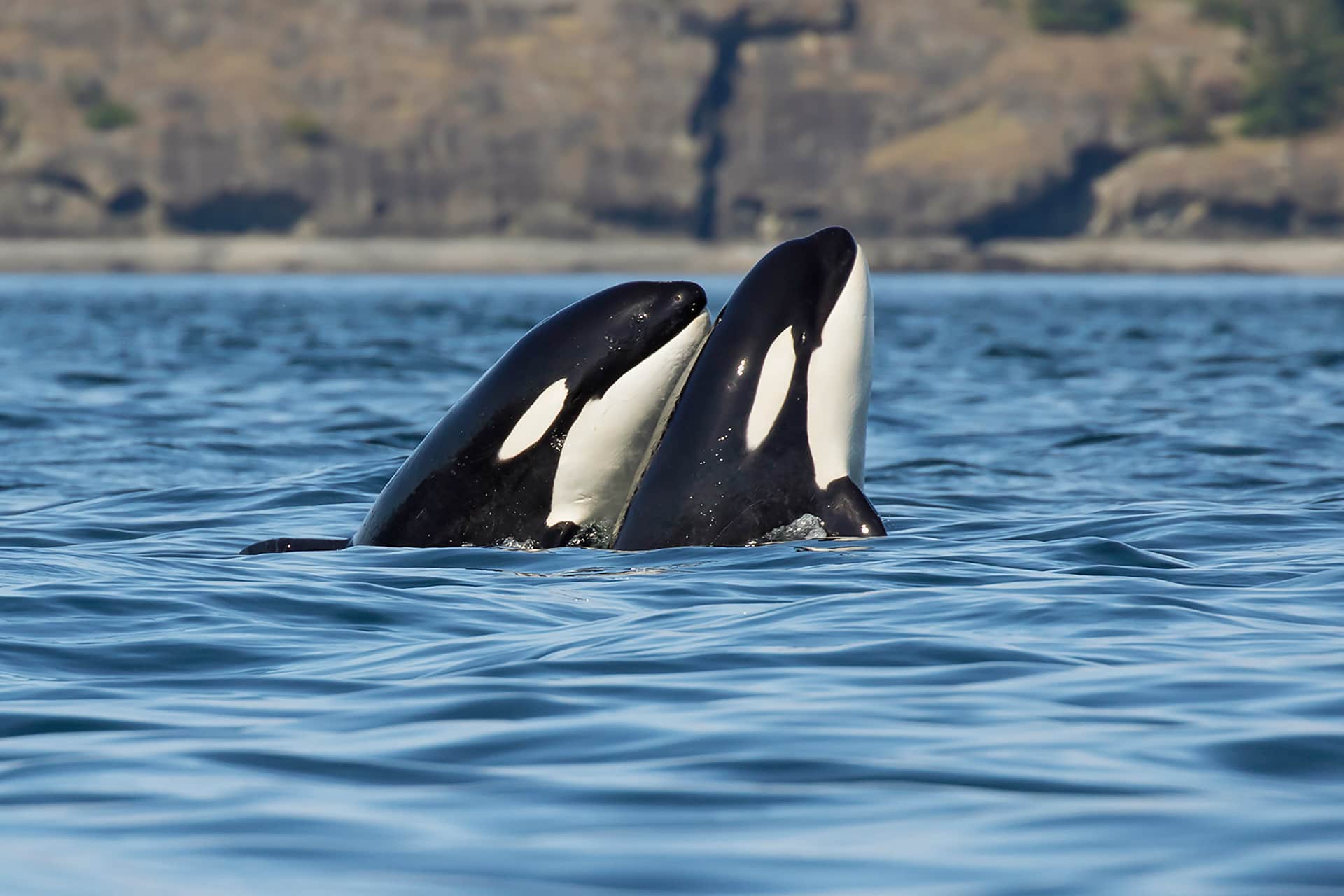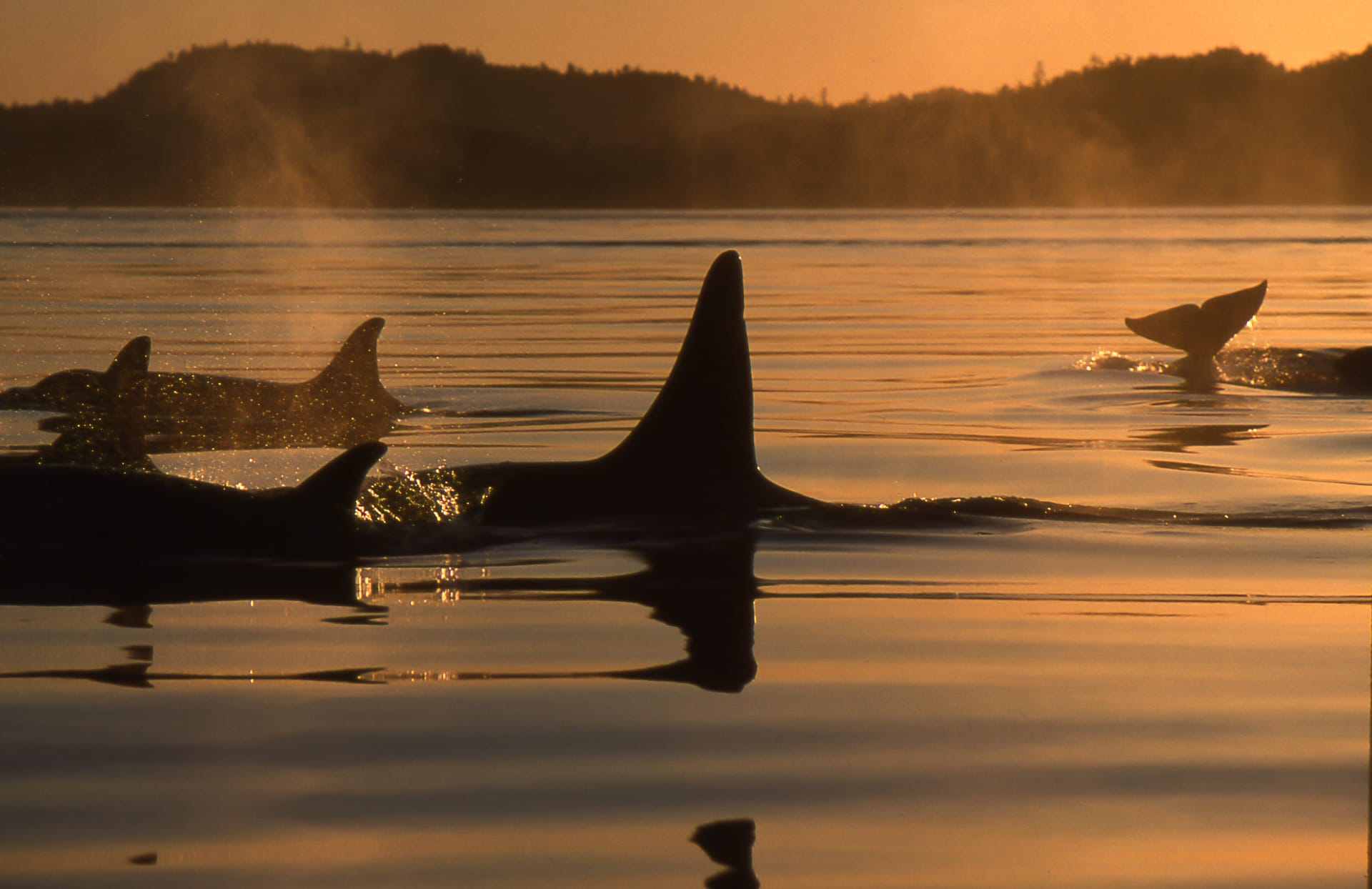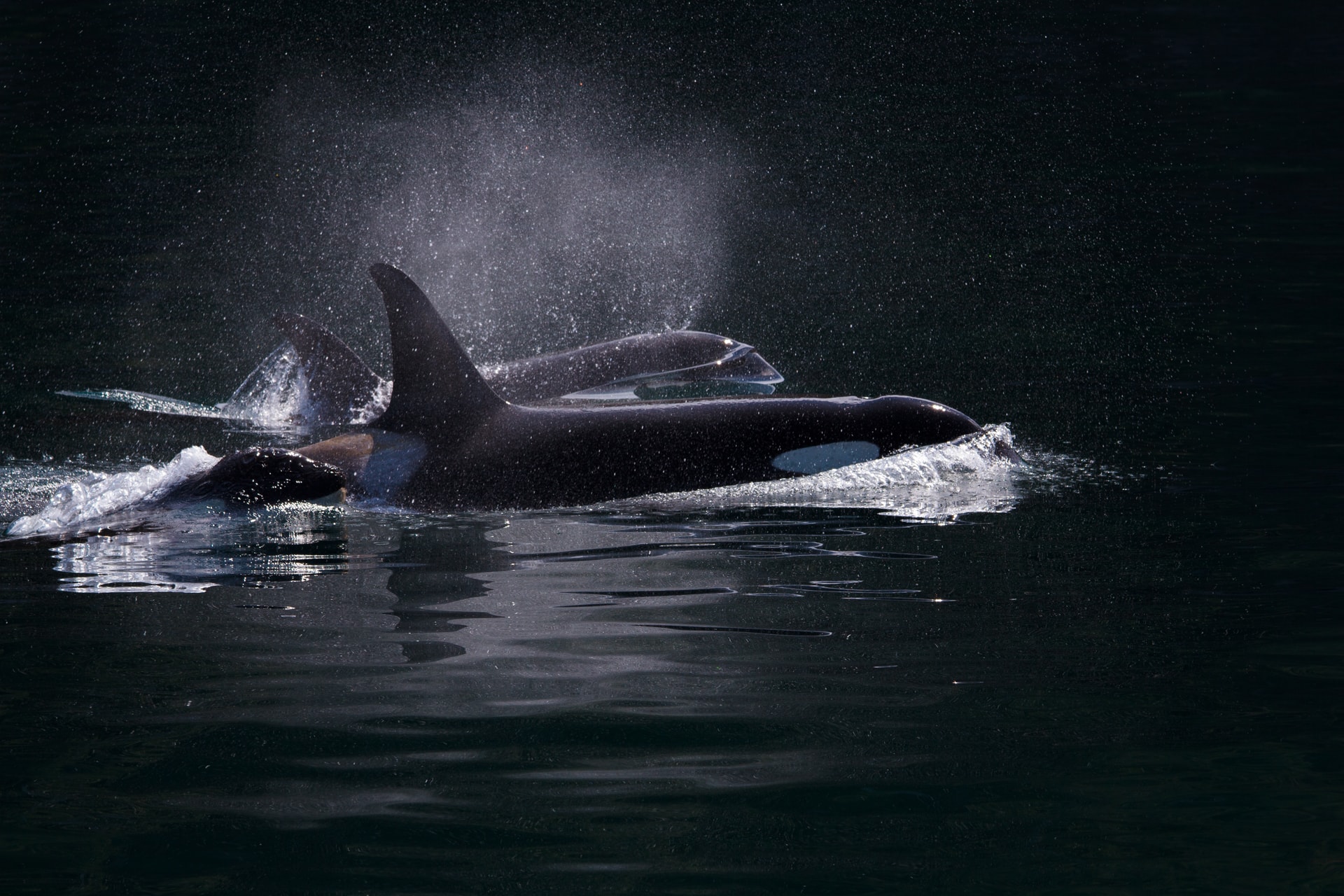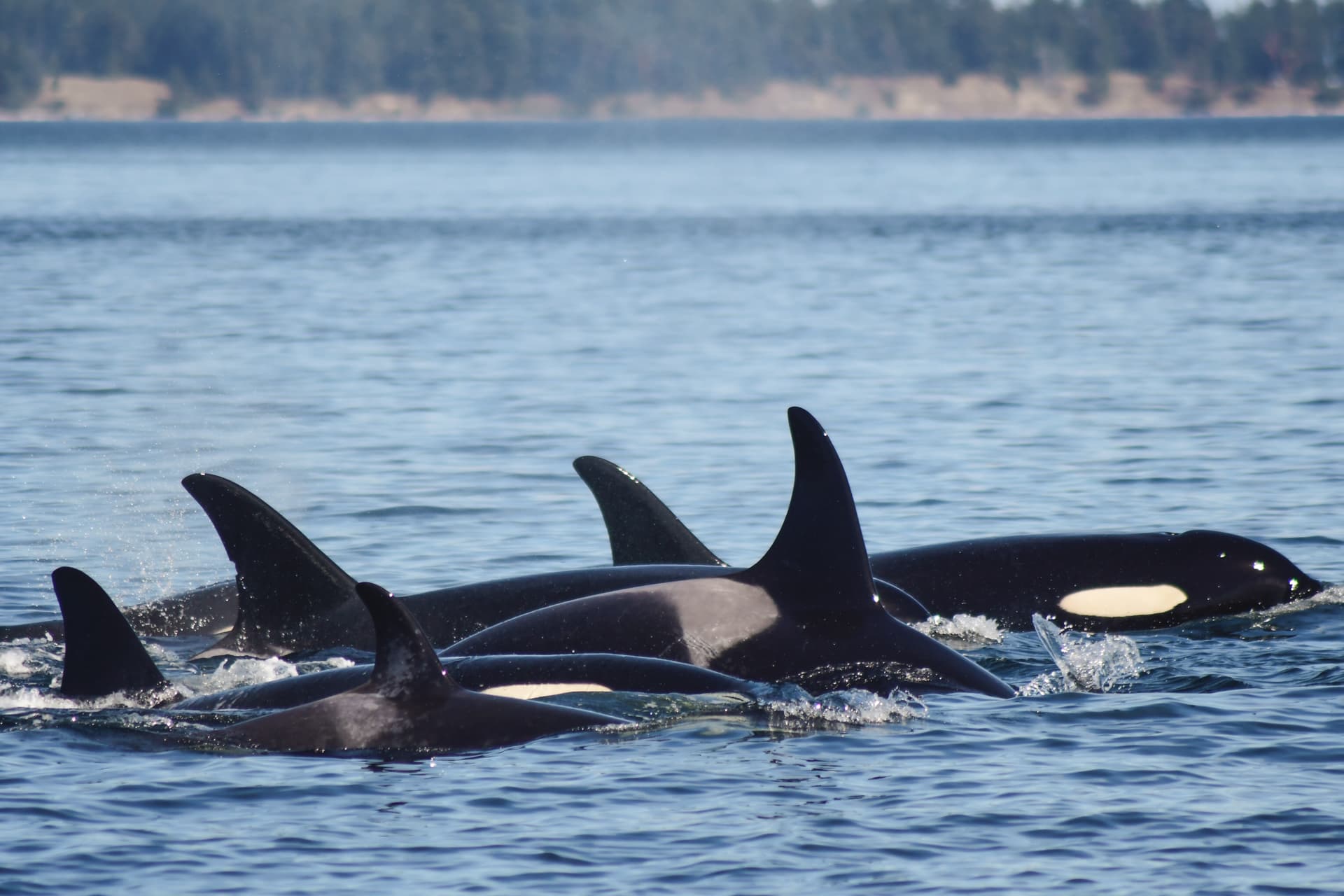
The Southern Resident killer whales have been studied since the 1970s. The photos taken to confirm who is present during each encounter also document relationships within and between matrilines—a mother and all her offspring—as well as interactions between individuals, or other pods in their community.
Examining such relationships has expanded our understanding of the importance of socialization in this community, such as learning that close friendships tend to be with animals of a similar age and same gender. Social interactions are important in a number of mammals, including humans, and have been shown to have a positive impact on longevity.
One study, co-authored by Wild Orca’s Dr. Giles, set out to determine—using this photographic record—whether social interactions might have any effect on the lifespan of individuals in this unique killer whale culture.
Whales photographed within three body lengths were considered to be part of the same group. These groups, the researchers established, averaged 11 whales that usually consisted of one or more matrilines. By following these relationships over a 30-year time span, the researchers could build a social network for each individual, and could assess the strength of these relationships by determining “the frequency with which individuals hunt, travel and socialize together.”
They found that the Southern Residents appear to “preferentially associate with a small number of individuals,” and that while they may socialize over the course of a year with others outside this small network, the socializations that occurred most frequently were likely the most relevant to longevity as “whales in close association have the opportunity to hunt together and share food.”
Their analysis found that the mortality risk to males could be predicted from their close social interactions, and that the larger their social network, the more likely they were to survive. In fact their risk of death was reduced by one third over males with a smaller network. They noted that “a higher reliance on social information and food sharing may explain why the survival of males, but not females, depends on their position within the social structure.”
Size Matters
Adult male killer whales are significantly larger than females, and it’s estimated that they need 25% more food. Researchers noted that in this society, females in particular often share fish and so “a male with a wider social network may be more likely to be the recipient of these food sharing events, increasing their food intake, and in turn increasing their probability of survival.”
In fact, as another study found, adult males are less likely to survive after the death of their mother, who is likely to be one of their primary providers. Males who buck this trend may take advantage of other relationships in their network.
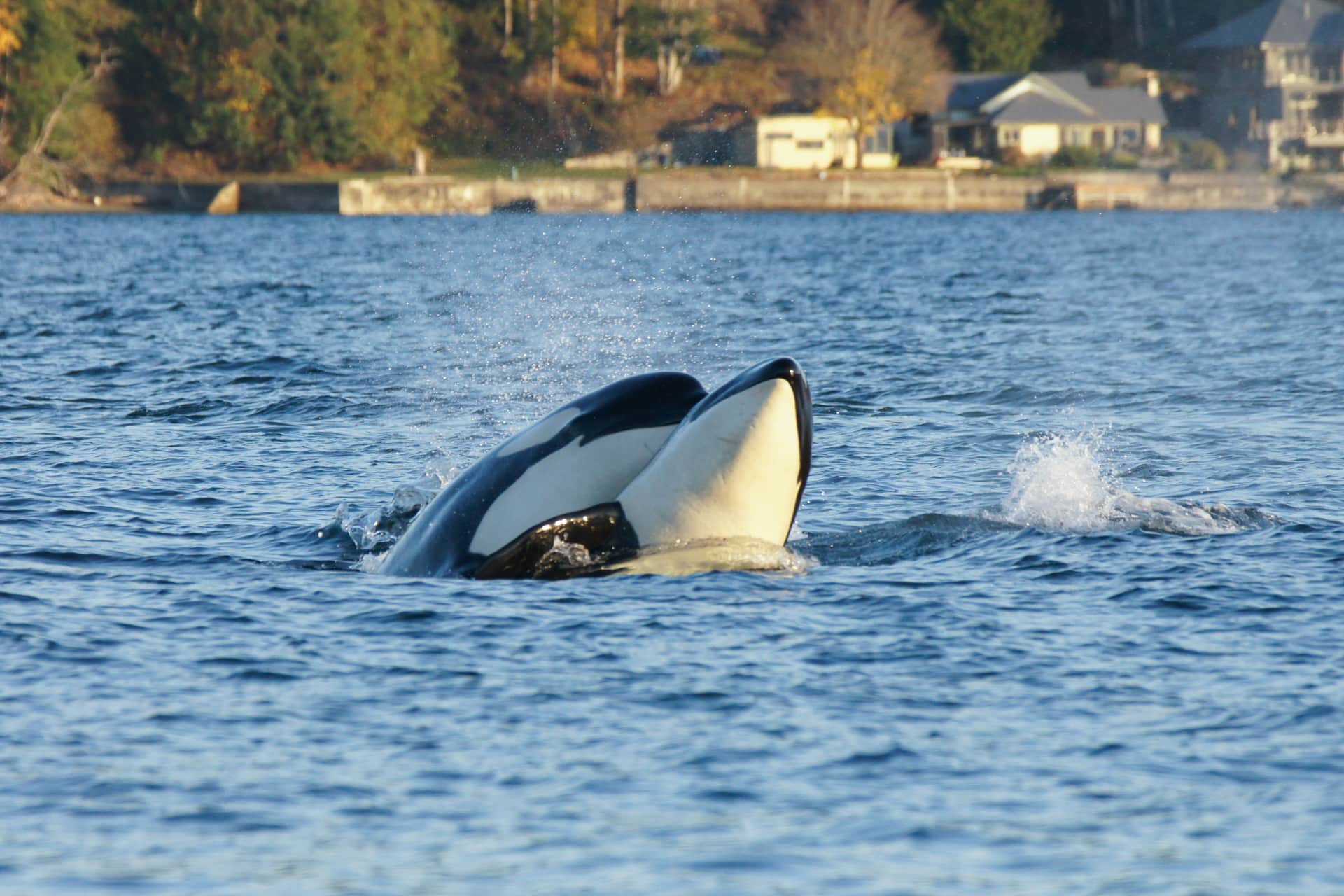
The researchers also reviewed whether the highly variable population of the Southern Residents’ primary prey—Fraser River Chinook (King) salmon—over this same 30-year time period had any influence on social interactions.
One striking finding is that males with strong social relationships benefit most in years of scarcity. During such times, with all energy expended for finding food, communal fishing expeditions decrease, and the Southern Residents socialize less. Thus the researchers concluded that, “more socially integrated males are likely to have better access to social information and food-sharing opportunities which may enhance their survival in years of low salmon abundance.”
Continued below...
In a more recent study, scientists found that the Southern Residents’ scars are not inflicted in times of prey shortage as might be expected, due to increased competition. In fact, as both these studies show, insufficient prey reduces important socialization time for this population, and so it is apparently during salmon abundance that social interactions take place when teeth meet skin.
What both these studies demonstrate is that the social life of Southern Resident killer whales is diminished in the absence of abundant prey. Their society is fragmented, as they divide into smaller groups within each pod to search for food, meeting less frequently, especially for a Superpod—where the entire community converges. These important social, and cultural events are denied each year when we fail to provide them with enough Chinook to meet their physiological requirements, and to feed their equally important psychological, and emotional needs.



